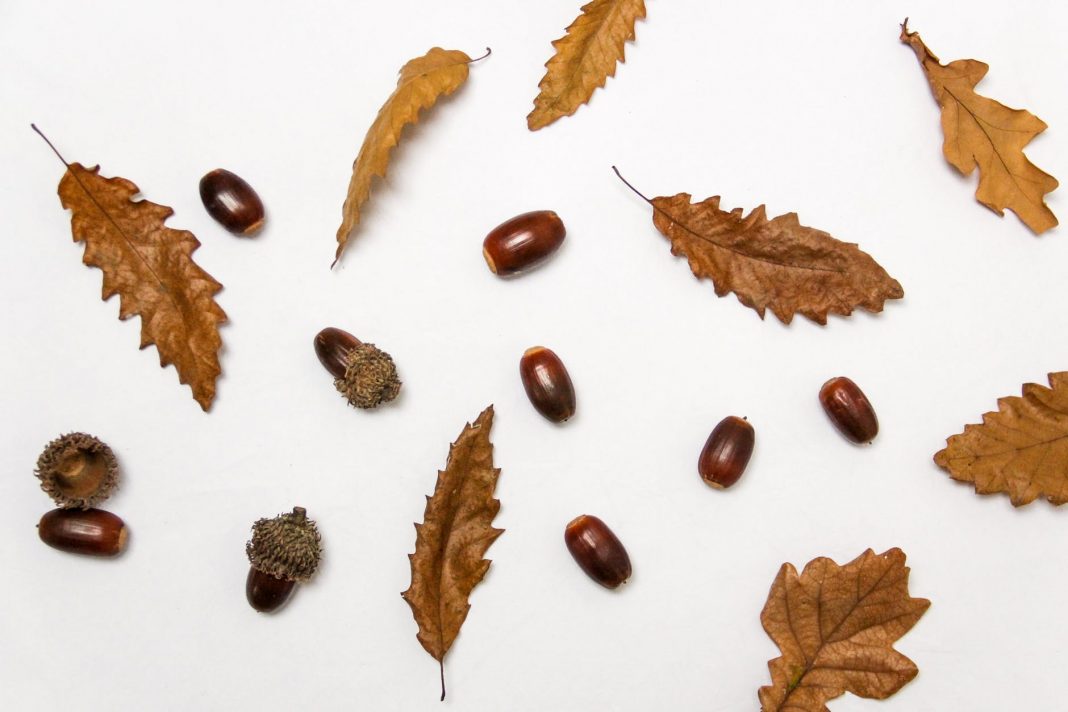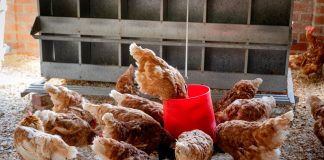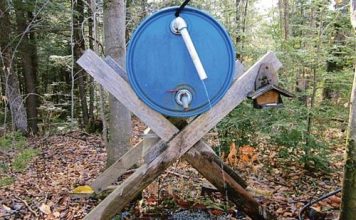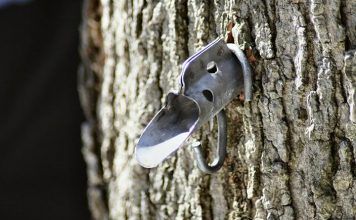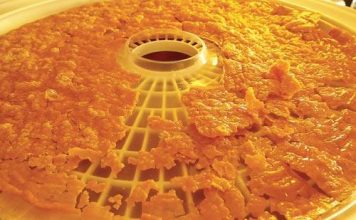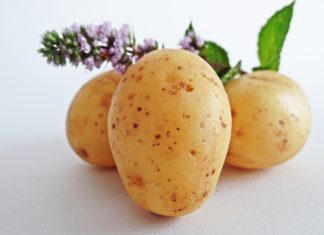 |
|
| Issue #67 • January/February, 2001 |
Start your garden this year while the snow is still on the ground. I start all of my own plants from seeds. One of my favorite winter pastimes is reading through my many seed catalogs and making choices for my spring garden. And when I’ve made those choices, I’ll order a bit at a time to ensure that no one supplier runs out of a must have variety.
You can learn a lot from seed catalogs. Most offer a bounty of gardening tips, from dealing with late spring frosts to ways to deer-proof your garden. Read them from cover to cover, then make your seed lists up, while snow lies deep on your garden plot.
Do you live in a short-season climate? There are now lots of varieties of short season vegetables available. There are even a lot of open pollinated vegetables, which allow you to save your own seed for the future.
Do you live in the south or arid southwest? There are varieties that will take both heat and drought. I’ve found that many Native American vegetables excel in these difficult climates.
Do you have virus or fungal problems in your garden, especially with peppers, cukes, and tomatoes? There are multi-resistant varieties to take care of that.
Starting seeds
The general order in which I start my plants from seeds, both the seeds I’ve saved and the ones I order, is peppers, tomatoes and eggplant, cabbage, cauliflower, then broccoli. I usually give the peppers 10 to 12 weeks, from planting to setting out time. They germinate and grow fairly slowly. The tomatoes and eggplant get from 6 to 10 weeks, depending on the variety and growing condition. (A shorter time in a hot greenhouse, a longer time in a cooler sunny back window.)
The cabbage family seeds should be planted no more than 6 weeks before being set out, because if they are too big when being set out the broccoli and cauliflower will “button,” that is, make little heads way before they should and stunt the plant resulting in a tiny harvest instead of a normal large head.
Plant your seeds in containers that are at least 2 inches deep. I’ve seen a lot of seeds wasted by planting them in shallow trays such as pie pans, etc. Most will quickly dry out and die, and the survivors’ roots will have no room to grow deeply.
Some “free” containers I’ve used include milk cartons, cottage cheese containers, plastic freezer boxes, old Tupperware containers scavenged from the dump, and two-liter soda bottles found here and there.
Don’t waste time and money buying “potting soil,” which is cheap but contains only acid peat moss. Seeds do not germinate and grow well in it. I know. I used it in my first greenhouse and lost a good portion of my seed.
Buy a professional seed starter for the best results. It contains milled peat moss, along with materials to keep the soil from compacting and getting soggy.
You can use your own good compost, but you must cook this soil to kill bad bacteria, fungus, and mold. Place the fresh, well-decomposed compost in old roasting pans and bake it in an oven at 250 degrees for half an hour. It works; my mother and grandmother did it. But boy does it stink. I used to call it baking angleworms.
Before filling your containers with soil, poke a few small holes in the bottom with a sharp nail to allow them to drain. You never want soggy soil as it causes seeds to rot and plants to damp off.
Place enough planting medium in containers to fill comfortably. Then moisten it well, but don’t get the soil soggy. One tip I’ve discovered is to use very hot water. This will cut your germination time down considerably, and also improve germination. And, no, it doesn’t “cook” the seeds.
Now it’s time to plant the seeds. When you look into a pack of tomato seeds, you’ll see from 30 to 100 seeds on average. Don’t plant them all. It’s a waste and you don’t need 20 to 90 tomato plants of the same variety under most circumstances. Figure out how many plants of that variety you actually need, and plant that many, plus a few more to allow for those which do not germinate or which die later.
You can save those extra seeds for next year. With very few exceptions, most garden seeds are good for years and years, if simply kept dry.
Plant the seeds in depressions you make with a pencil, about ¼ inch deep and about an inch or more apart. Then gently tamp the soil over the seed, eliminating all the air but not compacting the soil.
Mark each container with a permanent marker so you can keep track of each variety.
Water lightly with hot water, then place the container in a plastic mini-greenhouse. Use an old bread wrapper or other clear plastic bag. Close off with a twist tie and place in a warm spot where it can stay from a week to two weeks, waiting for those little seeds to germinate. Tops of refrigerators and sunny windows work well.
A plant-growing stand
If you have electricity, seriously consider making a plant-growing stand. This is basically a bookshelf with the shelves spaced 20 inches or more apart and 4½ feet long. From each shelf you can hang a florescent shop light. These provide heat for seed containers when hung a few inches above the containers, and light for little plants when the seeds germinate. As the plants grow, you can move the lights higher and higher.
Your homemade plant-growing stand will grow strong, straight plants for your garden, year after year, at little initial cost. Grow lights are nice, but I’ve always been too broke to afford them. Mom had one in her stand, but I couldn’t see any difference between the plants under the grow light and the ones under the $9.99 shop light.
As the plants grow, you need to transplant them into new containers. I scavenge six-packs from the dumpster each year, clean them well with bleach water and soap so I always have plenty. You can use these or any other deep container. The point is to replant each plant, giving it new soil and plenty of room to grow. Transplanting also slightly slows the plant’s growth, strengthening it as it begins to grow anew.
At transplanting, I feed each seedling with some weak manure tea or Miracle Grow.
Hardening off plants
Okay, it’s spring and the birds are singing sweetly outside in your garden. You’ve got the itch to plant your gorgeous plants you’ve spent weeks raising. But wait. If you simply set out those tender plants, you will stunt and possibly kill them from the shock of meeting wind, cold, and heat that they haven’t been exposed to in their protected environment.
To bridge this gap, you need to harden off your tender plants. On a warm day with no wind, bring them out into a protected spot for an hour. Repeat each day, then slowly increase the time you leave them outside. Watch to be sure they aren’t wilting or drying out from the sun and breezes. As they tolerate a protected spot, slowly move them out into a less-protected environment more like they will have in the garden.
Hardening off usually takes about a week and a half, depending on the weather. Don’t bring them out in really foul weather, cold, strong wind, or pounding rain.
Setting plants out
After the last (you hope) spring frost, and after the soil has warmed up, you are ready to set out your plants. The first to hit the garden are the cabbage family, as they can take more cold than can tomatoes, peppers, and eggplants. These are either set into rows, with the plants about 18 inches apart in each row and the rows about 20 inches or more apart. Or set them in beds 18 inches away from each other.
Where cutworms are a problem, make a little cardboard collar for each plant. I use old toilet paper and paper towel centers, cut down to two inches. As you plant each plant, slip one of these collars on it, burying all but ¾ inch below the ground. As cutworms chew off plants at ground level, the collar keeps them away without toxic chemicals.
Set the plants in just a little deeper than they were in the growing container. In dry climates, set each plant into a little basin, which will help hold water. In wet areas, plant each row on a raised bed to keep the roots moist, but not wet. Few garden plants tolerate “wet feet.”
The best type of frost protection for tomatoes and pepper plants is Wall ‘O Water, a poly cylinder of tubes which you fill with water, making a tipi around your plant. I’ve had temps down to 18 degrees, with snow a foot deep for two days, and had the plants not only survive, but actually thrive.
Other frost protections are paper hot caps, milk jugs with the top cut off, and floating row covers. However, all offer much less frost protection than the Walls ‘O Water.
Mulching new plants
At planting time I try to scatter a light mulch around each plant, only an inch deep at this time. This will help hold moisture and keep new weed seedlings at bay, but it is not so deep that cutworms can chew the plant above the collar.
As the plants grow, increase the mulch until it is eight inches deep. Too shallow a mulch will let the weeds poke through and will not hold enough moisture to be of benefit.
Some of my favorite mulches are clean straw, pine needles, and rotted manure compost. Never use hay that has gone to seed before being cut. One of the worst weed messes I’ve ever had resulted after I used old loose hay from a barn hay mow as mulch in my garden. I had enough timothy to cut hay in my tomato patch.
Direct seeding
Luckily, not all seeds need be started ahead of time, in the house or in a greenhouse. In fact most vegetables are best seeded directly into the garden in all but growing zones 1 and 2.
When spring arrives and the soil warms up enough to be able to be tilled well, you may begin planting your garden. There will be hard frosts to come, but there are many “frost-proof” veggies that will do well anyway. My usual order of planting goes like this: peas, onions, spinach, potatoes (from cut pieces of seed potato), carrots, lettuce, amaranth, parsnips, and beets. After the last expected spring frost, I finish planting all the tender vegetables that frost will probably kill if it hits those tender seedlingsbeans, cukes, melons, squash, pumpkin, etc.
As you progress, you’ll find that seeds are addicting. Right now I have more than two apple boxes full of them, just waiting for spring. No, I won’t plant them all. Some I’ll save for another year, some I’ll give away to those in need, and some I’ll trade for an interesting new acquisition.
But it is sure fun sketching out different gardens, using different varieties I have in that “magic box,” as my son, David, calls it. I hope you’ll join us this year.


